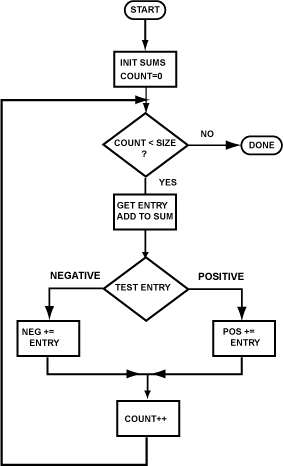Answer:
See Below
See Below
The flow chart could work for any language. Language details are left out of the design. The chart is a structured flowchart.
An array entry is one integer stored in the array, sometimes called an array element.

Here is an outline of the program. So far, it implements the first box of the flowchart, plus part of the loop. The data for the array has been declared.
SPIM initializes registers to zero, but it is good practice to explicitly zero accumulators.
Fill in the blanks.